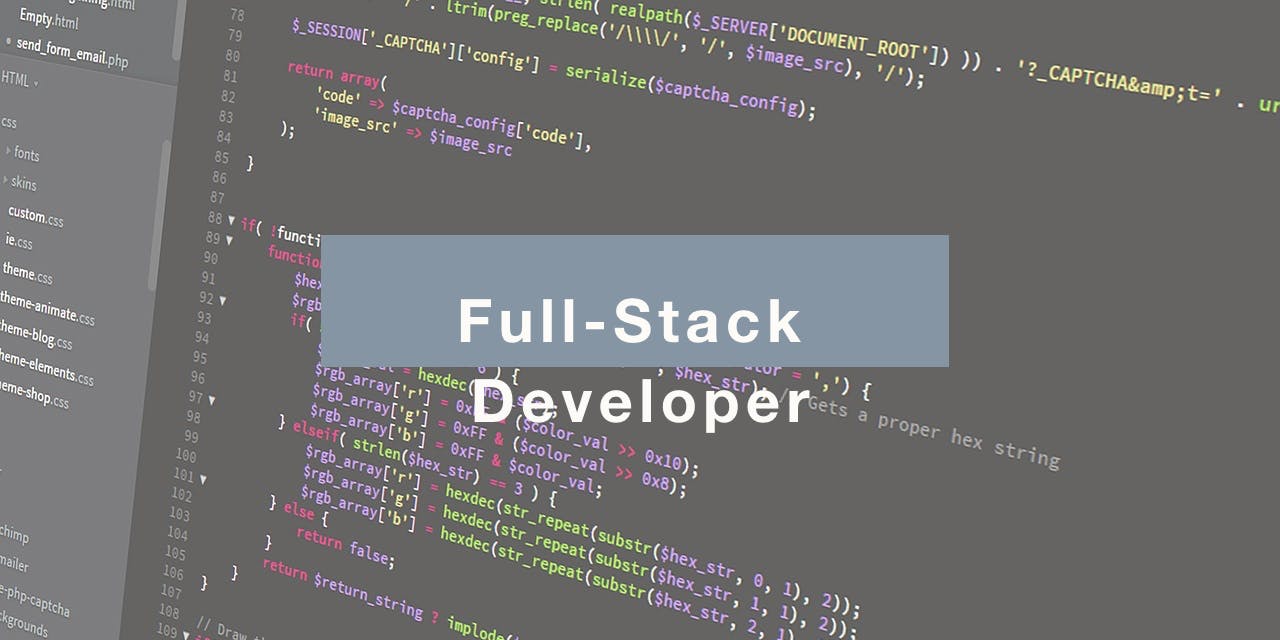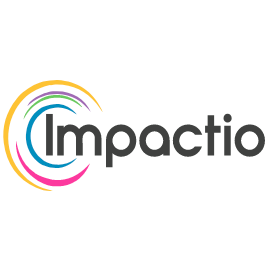What Does a Full Stack Developer Do?

Let´s start this article by defining what a Full-stack developer is before talking about what it does. A full-stack developer is a web developer, because of its extensive knowledge, has a full stack of knowledge. Proficient in both, Front-end and Back-end.
Full-stack developers can be Computer Science bachelors, Software Engineers, or learn in any coding Bootcamp that offers a web developer full-stack course. These courses usually last between 6 and 12 months at an intensive pace.
Full-stack developers master the art of web development. Knowing HTML, CSS, Javascript, Ruby, PHP, and Python.
As a front-end developer, you aim to develop an attractive home page, and be sure that the product is user-friendly. As a back-end developer, you aim to ensure the application with security features on the server and to connect the database and any Third-party service efficiently.
Programming Languages
Here´s a list of the complete languages one can learn to become a Full-Stack Developer.
Client Software (Front End)
- HTML
- CSS
- Bootstrap
- W3.CSS
- JavaScript
- ES5
- HTML DOM
- JSON
- XML
- Jquery
- Angular
- React Backbone.js
- Ember.js
- Redux
- Storybook
- GraphQL
- Meteor.js
- Grunt
- Gulp
Server Software (Back End)
- PHP
- ASP
- C++
- Java
- Python
- Node.js
- Express.js
- Ruby
- Rest
- Go
- SQL
- MongoDB
- Firebase.com
- Sass
- Less
- Parse
As a Full-stack developer, you know all the techniques involved in developing a web application. Not every programming language, but some language of each part. A Client language, a Server language, and a database language.
What can you do as a full-stack developer?
Full-stack developers can make prototypes rapidly and efficiently. They can and do help team members of all parts of the technology team, as their understanding is wide. They reduce the costs of the project or company. It is less expensive to hire a full-stack web developer than a front-end developer and a back-end developer. Of course, the fewer resources, the more time they will take to develop anything, but it is more efficient to hire full-stack developers. As a full-stack developer, it is easy for you to acquire new technical knowledge, as your foundation is strong and you can understand all the pillars of the web.
These developers work on 3 different segments. The presentation of the application, the Logic, and the Data. The presentation is every component that is used and viewed by the end-user, Front-end. The logic, is not part of what the user sees, but it is what makes what the user sees work. Without logic the presentation would only be visual but nonfunctional. The logic is Back-end. Lastly, the data segment, is how data flows and how data is stored, sent, and received. The Data layer is part of the Back-end too.
Full-stack developers can make websites that can fit all devices using a responsive feature. This means the Web developer doesn't have to become a mobile developer to develop a website that works on both, Web and Mobile. Some full-stack developers are mobile developers too as part of their stack, but the majority are only web developers.
Here´s how a job opportunity for a Full-stack developer looks like:
We are looking for a highly skilled computer programmer who is comfortable with both front and back end programming. Full Stack Developers are responsible for developing and designing front end web architecture, ensuring the responsiveness of applications, and working alongside graphic designers for web design features, among other duties.
Full Stack Developers will be required to see out a project from conception to final product, requiring good organizational skills and attention to detail.
Full-stack developers work on the architecture as well as on the application. They design the user interactions of the services. They create servers and databases. They are very close to designers, as they need the design first to be able to develop the product. They mostly follow a design first way of developing, where they first draw the concept, then they prototype it, and based on the prototype the designers design the wireframes and the developer starts working on the MVP.
In conclusion, Full-stack developers are web developers who have knowledge and proficiency on both sides of the application, Front-end and Back-end. They are specialists in HTML, CSS, Javascript, and for the server the majority use PHP. They work usually in teams or they can work as a freelance too. They are highly demanded in the market as they are less expensive than hiring a front-end and a back-end developer separately. To begin, you can start working as a front-end developer, and with time add back-end knowledge to your stack to become a Full-stack developer. It is the best way to achievement. If you are pursuing web development, to be a Full-stack developer is your best option.
Related Articles

Let´s start this article by defining what a Full-stack developer is before talking about what it does. A full-stack developer is a web developer, because of its extensive knowledge, has a full stack of knowledge. Proficient in both, Front-end and Back-end.
Full-stack developers can be Computer Science bachelors, Software Engineers, or learn in any coding Bootcamp that offers a web developer full-stack course. These courses usually last between 6 and 12 months at an intensive pace.
Full-stack developers master the art of web development. Knowing HTML, CSS, Javascript, Ruby, PHP, and Python.
As a front-end developer, you aim to develop an attractive home page, and be sure that the product is user-friendly. As a back-end developer, you aim to ensure the application with security features on the server and to connect the database and any Third-party service efficiently.
Programming Languages
Here´s a list of the complete languages one can learn to become a Full-Stack Developer.
Client Software (Front End)
- HTML
- CSS
- Bootstrap
- W3.CSS
- JavaScript
- ES5
- HTML DOM
- JSON
- XML
- Jquery
- Angular
- React Backbone.js
- Ember.js
- Redux
- Storybook
- GraphQL
- Meteor.js
- Grunt
- Gulp
Server Software (Back End)
- PHP
- ASP
- C++
- Java
- Python
- Node.js
- Express.js
- Ruby
- Rest
- Go
- SQL
- MongoDB
- Firebase.com
- Sass
- Less
- Parse
As a Full-stack developer, you know all the techniques involved in developing a web application. Not every programming language, but some language of each part. A Client language, a Server language, and a database language.
What can you do as a full-stack developer?
Full-stack developers can make prototypes rapidly and efficiently. They can and do help team members of all parts of the technology team, as their understanding is wide. They reduce the costs of the project or company. It is less expensive to hire a full-stack web developer than a front-end developer and a back-end developer. Of course, the fewer resources, the more time they will take to develop anything, but it is more efficient to hire full-stack developers. As a full-stack developer, it is easy for you to acquire new technical knowledge, as your foundation is strong and you can understand all the pillars of the web.
These developers work on 3 different segments. The presentation of the application, the Logic, and the Data. The presentation is every component that is used and viewed by the end-user, Front-end. The logic, is not part of what the user sees, but it is what makes what the user sees work. Without logic the presentation would only be visual but nonfunctional. The logic is Back-end. Lastly, the data segment, is how data flows and how data is stored, sent, and received. The Data layer is part of the Back-end too.
Full-stack developers can make websites that can fit all devices using a responsive feature. This means the Web developer doesn't have to become a mobile developer to develop a website that works on both, Web and Mobile. Some full-stack developers are mobile developers too as part of their stack, but the majority are only web developers.
Here´s how a job opportunity for a Full-stack developer looks like:
We are looking for a highly skilled computer programmer who is comfortable with both front and back end programming. Full Stack Developers are responsible for developing and designing front end web architecture, ensuring the responsiveness of applications, and working alongside graphic designers for web design features, among other duties.
Full Stack Developers will be required to see out a project from conception to final product, requiring good organizational skills and attention to detail.
Full-stack developers work on the architecture as well as on the application. They design the user interactions of the services. They create servers and databases. They are very close to designers, as they need the design first to be able to develop the product. They mostly follow a design first way of developing, where they first draw the concept, then they prototype it, and based on the prototype the designers design the wireframes and the developer starts working on the MVP.
In conclusion, Full-stack developers are web developers who have knowledge and proficiency on both sides of the application, Front-end and Back-end. They are specialists in HTML, CSS, Javascript, and for the server the majority use PHP. They work usually in teams or they can work as a freelance too. They are highly demanded in the market as they are less expensive than hiring a front-end and a back-end developer separately. To begin, you can start working as a front-end developer, and with time add back-end knowledge to your stack to become a Full-stack developer. It is the best way to achievement. If you are pursuing web development, to be a Full-stack developer is your best option.
Related Articles
